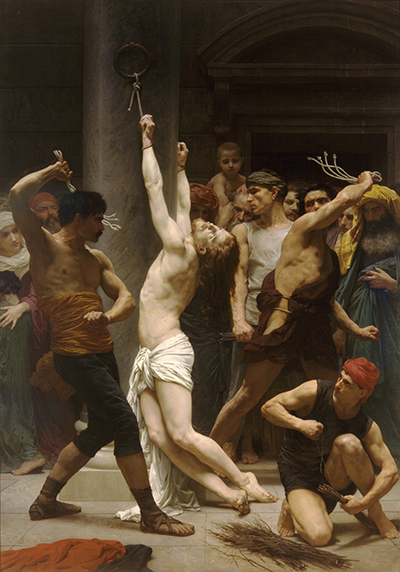This carefully planned painting depicts a powerful scene of emotion and pain, perfectly capturing the discomfort experienced by Christ
William-Adolphe Bouguereau would complete study drawing after study drawing in order to ensure that this painting would reach the high standards that he always set for himself. The completed artwork is dated at around 1800-1802 and is amongst the most remarkable religious paintings in all art history, along with Pieta.
The finest quality of this artwork is the collection of figures that surround Christ, each and every one being completely believable, be they the soldiers, tormentors or followers. Each individual is so carefully put together, leaving the viewer with a true feast for the eyes, with activity and interest right across the canvas.
An important side note to all of William-Adolphe Bouguereau's religious paintings was that he himself was actually a devout Catholic. This genre of work would therefore be his attempt to show respect and admiration to God. This was also an artist who used great subtlety within his work, meaning that every inch of every canvas had to be well thought through. The likes of Caravaggio, Giorgione and Rembrandt might use aggressive lighting which would darken large parts of the canvas, meaning less detail would be required.
This portrait depicts Christ chained to a pillar, looking limp and lifeless. Christ is also far from exaggerated, looking distinctly human and without some of the muscle that other depictions of this figure have used. This was done so in order to ensure his plight is understood and that his vulnerability is communicated to the viewer.
The original painting can now be found at the Baptistery of La Rochelle Cathedral in France. Bouguereau gifted the work to the Society of Friends of the Arts in La Rochelle which was his original birthplace and somewhere that he always retained his connection to even after finding success in Paris.




